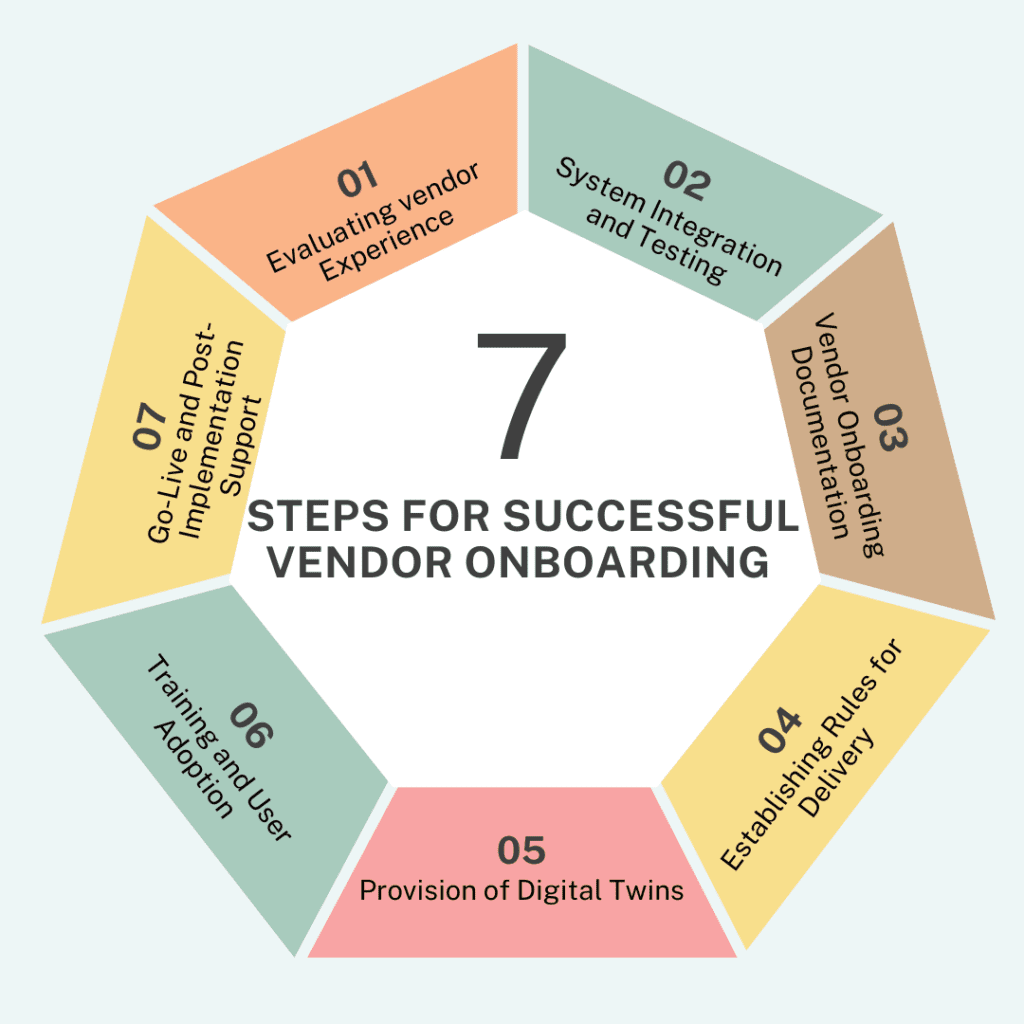Table of Contents
What is Vendor Onboarding?
Vendor onboarding refers to enrolling new suppliers in your company’s vendor management systems and establishing their access to your tools, procedures, and workflows to facilitate transactions with them.
In this blog, we will delve into several aspects, such as the benefits of vendor onboarding, factors to consider before vendor procurement, and, last but not least, the steps in the vendor onboarding process. Let’s get started!
Benefits of Vendor Onboarding
- Streamlined process and operational efficiency: A successful supplier onboarding procedure establishes a consistent method for enrolling new vendors as authorised suppliers.
- Robust supplier relationships: Strong vendor relationships help to build trust, creditworthiness, and enhanced communication. As a result, you can work with a vendor with healthy relations and long-lasting benefits.
- Mitigates risk: During the onboarding process, most of your vendor assessment takes place to guarantee that engaging with a specific supplier does not pose any risks to your business, whether reputationally, financially, or legally.
Factors to Consider for Vendor Onboarding in Warehouse Management

1. Assessing Warehouse Needs: To assess the warehouse needs effectively, it is essential to address the operational bottlenecks, inventory accuracy, and optimise space utilisation. Review labor efficiency and other potential gaps in the warehouse layout, and fulfill them according to required strategies to align warehouse management objectives.
2. Defining System Requirements: This plays a crucial role in determining the vendor onboarding process, as you can choose a vendor who delivers a system that helps to achieve the warehouse management objectives. Look for a WMS with robust security measures, integrated features such as real-time inventory tracking and order management, and seamless connectivity with CRM and ERP systems.
3. Budgeting and Financial Planning: Develop a clear budget that aligns with your warehouse’s operational goals. Estimate the ownership, software licensing, upfront costs, and future upgrades related to maintenance. Conduct a cost-benefit analysis, which helps determine the returns on investment, enhance operational efficiency, and reduce costs over time.
4. Sales Forecasting: Sales prediction aids in determining the appropriate quantity and type of products to request from suppliers to ensure the smooth provision of quality customer service.
In procurement, this task is undertaken by the in-house sales department. It encompasses the analytical projection of future sales by analysing historical sales data, current and upcoming trends, industry benchmarks, and more.
Steps Involved in the Vendor Onboarding Process

1. Evaluating vendor Experience and Reputation: Selecting the right vendor is crucial in enhancing the warehouse management capabilities. Evaluating the reputation and years of the vendor’s experience is essential. Check their business track record, creditworthiness, and vendor compliance with regulations. Choosing a vendor’s support is critical regarding customisation options for order management, after-sales service, and license pricing models.
Assign a person to your organisation to manage the vendor onboarding process. Choose the one who sets the requirements and offers satisfactory returns on time.
2. System Integration and Testing: It is essential to evaluate the customisation options regarding software pricing models and automation processes. Integration with the right vendor onboarding software is crucial. Ensure to assess the integration capability with ERP and CRM systems and automated processes to expedite the onboarding procedure, from submitting documents to using software for verification.
3. Vendor Onboarding Documentation: It is essential to create a vendor agreement with several vital clauses and necessary conditions, which are listed as follows:
- Goods and services offered
- Exchange of confidential information
- Coverage for loss or damage
- Causes for contract termination
- Quoting final prices
- Highlighting terms of payments
- Adhering to industry tax standards
4. Establishing Rules for Delivery: It is vital to include this fundamental requirement in the contract regarding the conditions you expect for the delivery of the products and services.
- Establishing an accurate schedule for shipments
- Explaining causes for any potential delays
- Guaranteeing compliance with delivery specifications
- Showcasing available insurance options for every service
- Enforcing adequate security measures for merchandise
5. Provision of Digital Twins: It is a crucial step in the vendor onboarding process. At Addverb Technologies, we prominently utilise digital twin technology, making an exact digital replica of a physical place that includes all its features and traits.
We can run simulations under different settings with this model, which helps us anticipate results, spot any problems, and maximise efficiency.
We integrate digital twins into the vendor onboarding process to ensure that new vendors easily integrate into our operations and have a clear grasp of the site and its dynamics.
At Addverb Technologies, this process enables us to enhance operational efficiency, mitigate risks, and effectively enhance vendor collaboration to create a seamless flow of operations and maintain a competitive edge as we leverage digital twins technology.
6. Training and User Adoption: It is essential to evaluate a purchase-sales workflow to understand the future steps clearly, and one way to start is by testing product purchases. The process involves:
- Confirming a specific quantity at a set purchase price
- Creating the purchase order invoice
- Making the payment to the vendors
- After receiving the orders, commencing the sales process
- Shipping out the products and generating customer invoices.
7. Go-Live and Post-Implementation Support: This is the last step in the vendor onboarding process, where all the vendor’s services are fully deployed and operational. It involves a complete transition from implementation to usage, ensuring all functionalities are completed. Post-implementation support addresses issues, mitigates risks, and ensures smooth integration with other systems.
Wrapping Up
An efficient vendor onboarding procedure is necessary for a successful Warehouse Management System (WMS). Comprehensive vendor evaluations, unambiguous communication of compliance standards, extensive training programs, and system integration skills are essential preconditions. These components guarantee smooth integration, effective operations, and consistent productivity in warehouse operations.
Reach out to Addverb Technologies, where our warehouse management system streamlines an array of tasks, optimises warehouse operations, and offers real-time visibility.

Founded in 2016, Addverb offers complete robotics solutions for warehouse and industrial automation, with a strong global presence through its subsidiaries worldwide. The company provides a range of in-house automation products, including Autonomous Mobile Robots, ASRS, and sorting technologies. It serves over 350+ clients, including well-known companies such as Coca-Cola, Amazon, and DHL.





